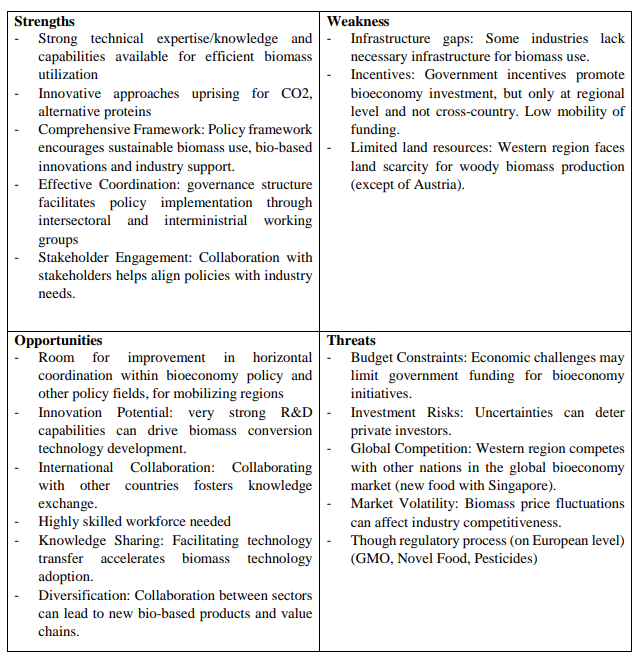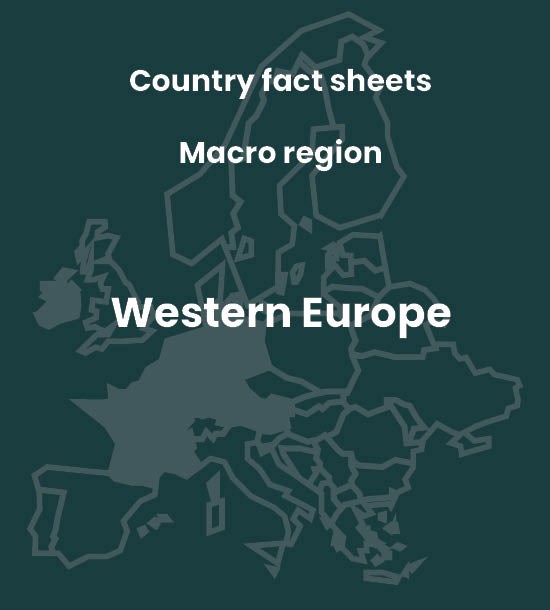The western macro-region is composed of seven countries: Austria, Belgium, Germany, France, Ireland, Luxembourg and the Netherlands.
The countries of the western macro-region represent 29.36% of the total land area of the EU-27. France is the largest country in the EU and Luxembourg is placed in the last position compared to the rest of the countries. Regarding the number of inhabitants, the western macro-region accounts for 43.68% of the total population of the EU-27. Germany and France are ranked at the top. However, Luxembourg and Belgium, are placed in the last positions in terms of the number of inhabitants.
SWOT Analysis of the Western Region
In the SWOT analysis below, an overview of the region’s strengths, weaknesses, opportunities and threats are provided. As you can see, the analysis shows among others that the Western Europe Region has strong R&D capabilities can drive bioeconomy conversion technology development. The International collaboration fosters knowledge exchange, and a highly skilled workforce is needed. Facilitating technology transfer accelerates biomass technology adoption, and sector collaboration can lead to new bio-based products and value chains.
The region has alos a comprehensive policy framework encourages sustainable biomass use and bio-based innovations.

Below is a map summarising the main strategies, collaborative structures and policy instruments in the Western Europe macro-region (Austria, Belgium, Germany, Luxembourg, The Netherlands, Ireland).
The Western macro-region is crucial in the EU’s bioeconomy, with a focus on agriculture and nearly half of EU biorefineries. It excels in chemical and biomethane production, supported by strong R&D institutions. Countries like Germany, Ireland, France, and Austria lead in bioeconomy strategy, while disparities exist, notably in Luxembourg and Belgium.
The region faces challenges in collaboration and policy coherence, with stakeholder involvement being key. Despite ongoing debates and criticism, particularly on sustainability, the region shows commitment through diverse funding and technology transfer initiatives.
However, commercialization support and demand-side policies remain fragmented, highlighting the need for a holistic approach to enhance SME access to funding.
Country fact sheets to be downloaded!
if you’re curious to know more about the bioeconomy sector in the Western Europe Region, you can read the recently published report called ”Report on macro-regions – Mapping of initiatives, structures, instruments and key challenges for EU’s macro-regions
